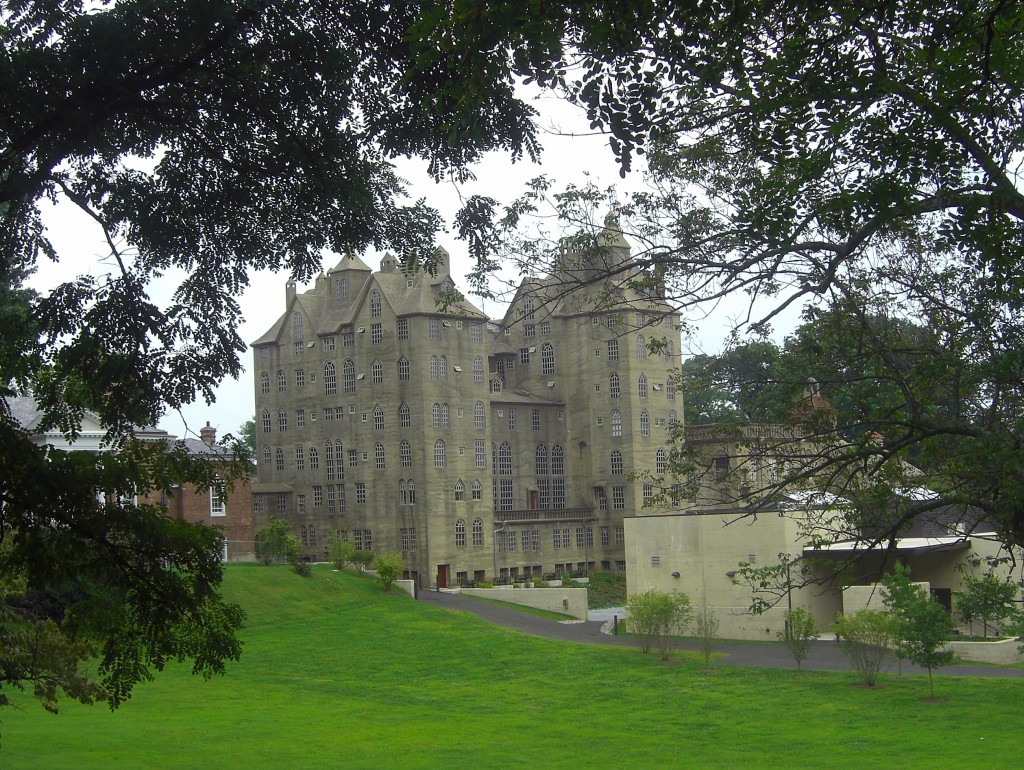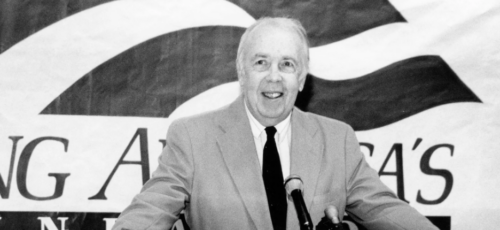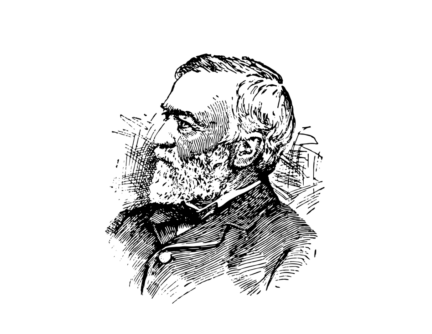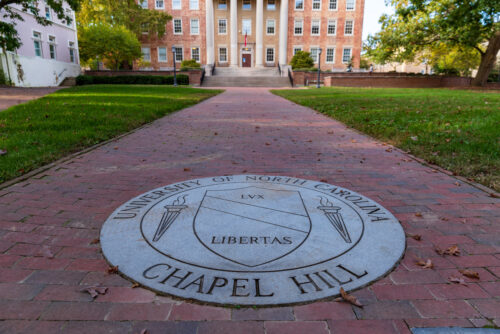The historian spends far too much time in the library or in the archives looking at papers. Every once in a while one needs to go outside and view the world.
I’ve never been to Kykuit or the Rockefeller Archive Center, but I did once spend a memorable afternoon at The Cloisters, a tribute to John D. Rockefeller, Jr’s excellent taste in art. I have also visited the Rockefeller rooms at the Museum of the City of New York. In the early 1940s, the townhouses the Rockefellers occupied in Manhattan were torn down to make way for the Museum of Modern Art. The Rockefellers intelligently decided to donate the contents of these townhouses, so the museum has preserved them to let anyone curious about what John D. Rockefeller’s living room looked like in the 1880s. (His interior decorator really liked red.)
A few weeks ago, I went to Doylestown, Pennsylvania to learn about one of the more interesting nineteenth-century philanthropists: Henry Chapman Mercer.
Mercer was born in Doylestown in 1856, and died there in 1930. I couldn’t find anything online that explained where his family’s money came from or how much he was worth. But he was independently wealthy, which enabled him to pursue his interests in archeology.
He was graduated from the University of Pennsylvania, and worked for a while in that school’s archeology department. But after some digs in Pennsylvania unearthing Indian artifacts, he had a bright idea. Instead of digging to bring up the remnants of long-dead civilizations, why not preserve technology of the 18th century?
So Mercer began accumulating artifacts and built the Mercer Museum to house them. There are quite a lot of these objects: hats, plates, eighteenth-century medical equipment, and every object used in an eighteenth-century kitchen. Mercer collected larger stuff: Conestoga wagons, tollgates. To house all these artifacts, he built a seven-story concrete building, in which the smaller stuff is in small rooms near the walls and the larger stuff is hanging from the ceiling.
(Why concrete? Mercer wanted to protect his museum’s contents against fire. But I also got the sense that concrete was a cutting-edge technology in 1913 and was pretty cool.)
I gathered that there has been some reorganization but the museum exists in a form that Mercer would recognize. It’s a very evocative and unique space. If I were doing serious research on anything involving technology between 1700-1850 (including domestic technology) I’d find Mercer’s collections very useful.
The Mercer Museum has a modern annex, which had an exhibit on how volunteer fire companies in Philadelphia were taken over by the state. The story is that these companies flourished in Philadelphia until around 1850. They were local and served as both social club and fire-protection service. And, like far too many clubs in Philadelphia at the time (as the Bible Riots of 1844 show) some of these fire companies engaged in anti-Catholic bigotry.
There was a pretty fierce argument in Philadelphia in the 1850s and 1860s about whether homes were better protected by volunteers or the state. The pro-government side won primarily by arguing that only the city could afford large, modern equipment (powered by steam engines). The volunteer companies were nationalized in the early 1860s but survived as social clubs until 1919, when they closed up shop and donated their archives to the Mercer Museum.
Henry Mercer was also interested in art. He was a supporter of the Arts and Crafts Movement, which tried to adopt medieval and Renaissance themes for modern times. Mercer’s idea was to create tiles, and built the Moravian Pottery and Tile Works to make them. He originally made tiles based on Pennsylvania Dutch stove patterns, but later adapted all sorts of medieval patterns.
The Tile Works was created as a for-profit social enterprise, which closed around 1970. In about 1985 the Bucks County, Pennsylvania Parks Department decided to restart it as a nonprofit. They have four tile makers, and the one on duty when I visited said that tiles are made from clay that comes from a lake about 10 miles away. Most of the molds are ones Mercer used, although they make one special tile a year from their own designs.
Mercer’s final achievement was his home, Fonthill Castle, which I gather has many more examples of his collections. I didn’t have time to see it but I do plan to visit Doylestown again and look forward to seeing what the castle is like.
Henry Chapman Mercer’s legacy is important. He created an interesting museum that adds to our knowledge of the past. He created art with his tiles that still gives us pleasure. That’s a pretty good record.
I have no idea how much money Mercer used to create his museum and his tile works but he spent his wealth intelligently on projects that provide a great deal of pleasure today. He deserves our respect.






